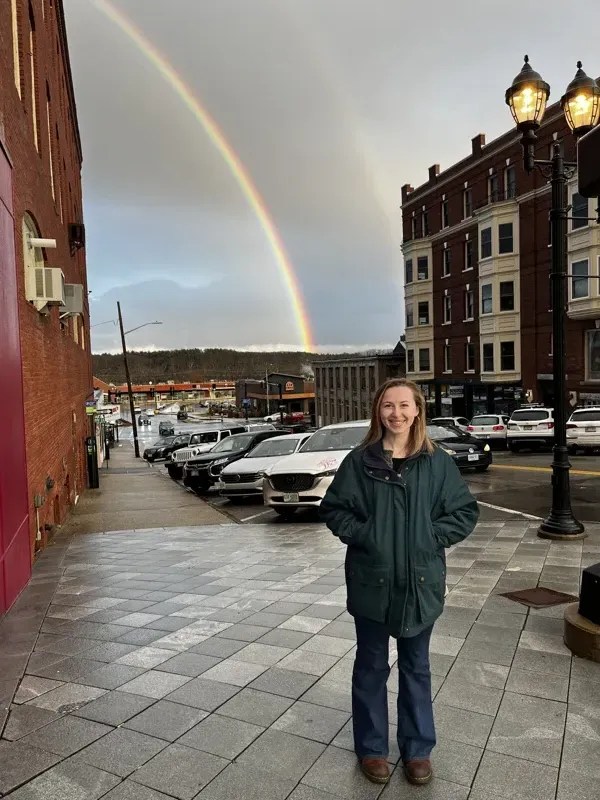About
Who I am, what drives me, and how I got here.
TL;DR
Hello! My name is James and I am a PhD candidate at Yale in the Pathology and Molecular Medicine program. My goal is to integrate biology, chemistry, and computer science for the advancement of medicine. If my research contributes to breakthroughs in basic science or machine learning along the way, all the better!
I grew up in Massachusetts and graduated from the UMass Amherst Commonwealth Honors College with a major in biology and minor in chemistry in the Spring of 2021. I worked in research labs all four years at UMass, mainly focusing on the use of nanomaterials in biological systems. I enrolled in my PhD at Yale in the Pathology and Molecular Medicine program in the Fall of 2021.
Under the mentorship of Dr. Ranjit Bindra, I research the development of novel DNA-damaging agents to target tumor-specific DNA repair defects. I am one of two Chief Graduate Students for the Pathology Department (think "Chief Residents" for research), I serve on the Pathology DEI leadership committee, and I constantly strive to create interdisciplinary research opportunities between fields by organizing seminars and other professional meetings. Outside of Yale, I am the founder and executive director of Education Equity Mentors, a non-profit that offers free tutoring and college prep to students facing financial hardship.
Career aside, I love fitness, books, video games, and my wife! I served as track captain in high school, placed 29th in the country for collegiate powerlifting, ran two ultra trail races, and competed in several BJJ and judo tournaments. Don't be fooled by the previous sentence: I am a huge nerd. I avidly read fantasy, science fiction, classic lit, and popular science. As for games, I love all things Nintendo, Soulsborne, and Myst-like. Last and most, I get to enjoy all of these things with my best friend and wife, Meaghan, along with our cat, Eevee.
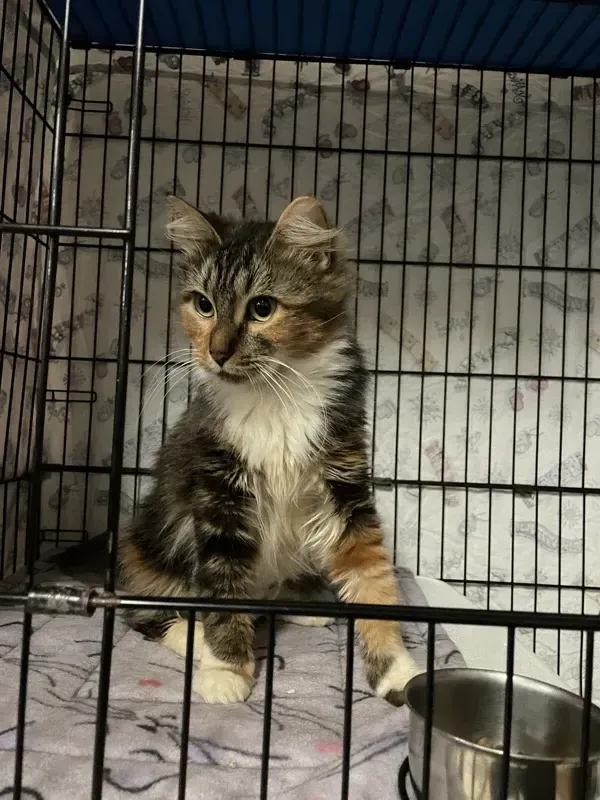
Origin Story
I grew up in a small town south of Boston, Massachusetts. From a young age, I loved fitness, books, and video games, three habits I've yet to kick. I graduated high school in Spring 2017 where I served as track captain and Model Senate Vice President. A class clown and homework-neglecter, I feel very lucky to have been accepted into the UMass Amherst Biology Department. I began my freshman year in Fall 2017 on the John and Abigail Adams scholarship. Motivated by my best friend and roommate, Chris Colvin, I began taking academics seriously. Increasingly excited by my coursework, I sought hands-on research experience.
Adler Lab: Pollinators, Plants, and Disease
I began my research career in the lab of Dr. Lynn Adler in January 2018, the start of my second semester at UMass Amherst. The Adler Lab studies how pollinator-plant interactions contribute to disease transmission and the global decline of bee populations. I applied for and received a competitive UMass work-study grant, which allowed me to work full-time in the summer of 2018, working closely with Dr. Adler and Dr. Jennifer Van Wyk.

Our NIH-funded research focused on trait-based disease transmission in a complex network, using a protistan parasite in the common eastern bumblebee as a model. When Dr. Adler and Dr. Van Wyk traveled for a cross-country conference, I was placed in charge of nine research assistants. We discovered that the species of plant that bees visited effected the likelihood of disease transmission due to flower morphology. I enjoyed my time in the Adler Lab, but my interests shifted towards the inherent interdisciplinary nature of cellular and molecular biology. I started a minor in chemistry and began looking into chemistry labs.
Rotello Lab: Nanomaterials for Biological Applications
While at UMass, I competed nationally on the powerlifting team. My teammate, Vincent Clark, introduced me to Dr. Vincent Rotello. I joined the Rotello Lab in September 2018 and began researching the application of nanomaterials for the non-toxic delivery of proteins and nucleic acids directly to the cytosol. Each summer, I applied for and received a competitive UMass work-study grant, allowing me to research full-time in the summers. We developed a system for delivering biologics directly to the cytosol using a homopolymer called poly(oxanorbornene-imide), or “PONI,” which is made cationic via guanidinium functional groups.
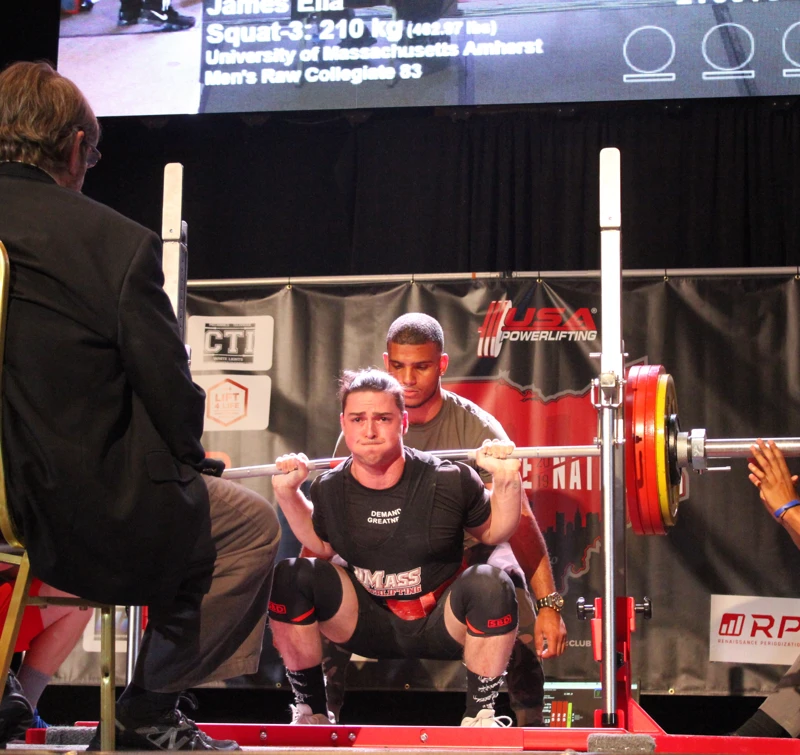
Our first approach used site-directed mutagenesis to add glutamates to the C-terminus of proteins (E-tag), giving the protein a bulk negative charge at physiological conditions. The negative E-tag spontaneously complexes with the positive PONI polymer in solution. With the protein encapsulated, the polymer momentarily disrupts the membrane and delivers the protein directly to the cytosol. As one of the few biologists in the lab, I primarily focused on the cell culture, genetic engineering, and protein purification. In addition to my role as a molecular biologist, I extensively characterized the nanoparticle-protein complexes by measuring electrokinetic potential and size distribution under varied conditions.
We initially used E-tagged green fluorescent protein (GFP) and E-tagged Cre recombinase, in combination with a Cre-reporter system with GFP as the positive signal, as proof-of-concept. We published our results in the Journal of the American Chemical Society. The disadvantage of this system is the labor-intensive mutagenesis of each protein one wished to deliver. To address this, we made the system more modulable and accessible by biotinylating the E-tag and the protein to be delivered, then complexing both with streptavidin, a tetramer that binds tightly to biotin. Now, any protein could be delivered using our homopolymer system with “mix on the bench” chemistry, circumventing the need for extensive genetic engineering. We published these results in ACS Nano.
During the 2019-2020 academic year, we shifted our focus towards using the PONI system for nucleic acids delivery, which already have a physiological negative charge due to the phosphate backbone. Interestingly, I found shorter PONI polymers encapsulated nucleic acids more efficiently. Our first project used plasmid DNA delivery as a method of vaccination against Newcastle Disease Virus (NDV). We demonstrated protection against NDV within a few weeks of vaccination in a chicken model. We published our work in Nanoscale. Following a similar methodology, we used the PONI system for delivery of siRNA targeting tumor necrosis factor alpha (TNF-α), an inflammatory cytokine, to reduce damaging inflammation in the lungs. We were particularly interested in this model due to the increasing prevalence of COVID-19. Our mouse model of lung inflammation showed a strong response to the siRNA delivery at low doses, temporarily lowering TNF-α and mitigating the immune cascade. We published our results in ACS Nano.
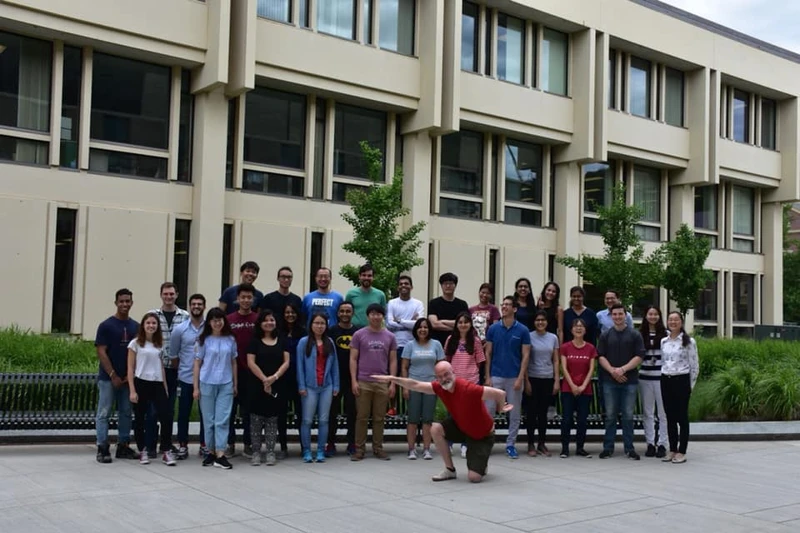
COVID-19 presented special challenges, cancelling my presentation at the Massachusetts Undergraduate Research Conference and temporarily closing UMass labs. Unable to continue my in-lab work during the summer of 2020, I co-authored a tutorial review on the use of nanomaterials to improve the safety and efficacy of bioorthogonal chemistry in biological systems, which we published in Chemical Society Reviews. After a competitive application process, I received the Commonwealth Honors College grant to fund my thesis research. Once lab space re-opened, I excitedly began the experiments for my honors thesis. I compared an alternative delivery system in the lab, the arginine-functionalized gold-core nanoparticle, with the PONI delivery system described above.
I wanted to make a quantifiable, simple measure of CRISPR/Cas9 gene knockout (KO) efficiency when delivered as a ribonucleoprotein (RNP) directly to the cytosol. My model used HEK-293 cells genetically engineered to express blue fluorescent protein (BFP). I then targeted BFP with CRISPR/Cas9 delivered by each system and used flow cytometry to quantify the efficiency of BFP KO based on the ratio of non-fluorescent (successful KO) to fluorescent (unsuccessful KO) cells. The PONI polymer, especially the longer version of the polymer, had the greatest KO efficiency. I presented my honors thesis at the 2021 Massachusetts Undergraduate Research Conference.
Enrolling at Yale: A Transition to Translation
My love of science is more than enough for me to pursue a PhD, but my mother’s terminal illness opened my eyes to translational medicine as a research topic. I remember visiting her in the hospital every weekend my junior year of college, seeing the sick and dying, feeling helpless as her condition worsened and eventually took her life. Her passing lit a fire in me to ensure my research will positively impact human health. Accordingly, I applied to translational medicine PhD programs where I could work closely with physicians to develop novel therapeutics. I joined the Yale Molecular Medicine, Pharmacology, and Physiology (MMPP) doctoral program due to its excellent integration with Yale-New Haven Hospital, the translational focus of the coursework, and the Cancer Biology Training Program (CBTP), which would grant me firsthand clinical experience. Through my consistent participation in seminars, clinical shadowing, tumor boards, rigorous coursework, and the Chief Graduate Student position, I have grown tremendously as a person and a researcher. I will always be grateful to my past-self for choosing this institution for my doctoral studies.

Saltzman Lab: Nanomaterials for Medical Applications
I first rotated with Dr. Mark Saltzman. The Saltzman Lab also focuses on the use of nanomaterials, but with a more direct application to human disease. I worked on the use of nanoparticles for the sustained delivery of poly-ADP ribose polymerase (PARP) inhibitors (PARPi) in a medulloblastoma mouse model. We used a catheter system to create medulloblastoma-like tumors, then delivered the encapsulated PARPi directly into the intrathecal fluid, a reservoir for medulloblastoma to evade treatment in the clinic. I worked directly with mice for the first time, performing intricate surgeries to implant the catheter into the cisterna magna and dissections to evaluate biodistribution of the nanoparticles. Although I found the research engaging, the Saltzman Lab placed more emphasis on the nanomaterials, while I wanted to work more directly with the therapeutic development.
Braddock Lab: Enzyme Therapy for Rare Diseases
I next rotated with the Braddock Lab due to their application of biologics to human disease. Specifically, I studied the use of engineered ectonucleotide pyrophosphatase 1 (ENPP1) for the treatment of generalized arterial calcification of infancy (GACI), a rare disease usually caused by ENPP1 deficiency due to excess pyrophosphate, leading to pathological bone formation. The ENPP1 gene is extensively modified for favorable therapeutic features in vitro, then expressed and purified for intravenous use. During my rotation, I designed an ENPP1 construct that added a bone-targeting tag to the protein, which would theoretically increase the effectiveness of the treatment. I validated the DNA construct via sequencing, however, my rotation ended before I could see the in vivo results. Since then, the construct was successfully purified and still in use by the Braddock Lab.
Bindra Lab: Targeting Tumor-Specific DNA Repair Defects
I joined the Bindra Lab for my final rotation because of Dr. Bindra’s “bench-to-bedside” philosophy. The lab has an excellent track record of translating basic science discoveries into actionable therapeutic strategies, which is the exact type of research I wanted to conduct when joining Yale. Broadly, my dissertation explores vulnerabilities caused by three of the most common tumor-specific DNA repair deficiencies: AlkB homolog 3 (ALKBH3) silencing, methylguanine methyltransferase (MGMT) silencing, and homologous recombination (HR) deficiency (HRD), which occur in 8%, 11%, and 18% of TCGA tumors, respectively. Throughout my dissertation, I have collaborated with Dr. Seth Herzon to create novel DNA-damaging agents that create specific lesions repairable by normal tissue but irreparable by the tumor due to the corresponding DNA repair deficiency.
The first project I worked on during my rotation and upon joining the lab focuses on the DNA repair protein ALKBH3, which directly repairs 1-purine and 3-pyrimidine alkylation in DNA and RNA. ALKBH3’s CpG promoter is commonly hypermethylated in cancer, resulting in loss of protein expression and increased sensitivity to specific alkylators. Additionally, ALKBH3 is strongly inhibited in mutant isocitrate dehydrogenase (IDH) tumors due to the accumulation of an inhibitory oncometabolite. Through a competitive internal application, I applied for and received a cancer focused T32 slot to help fund this research. I designed and tested a library of DNA alkylators to determine which properties result in the greatest ALKBH3-dependent differential in cell viability using isogenic cell lines I created. Of the agents I tested, an SN2 methyl alkylator caused the greatest decrease in viability in the absence of ALKBH3. I also tested this alkylator in combination with DNA damage response inhibitors (ATRi, PARPi, ATMi, etc.) to determine which agent results in the greatest cell death synergy. I am now determining the DNA damage response in the presence and absence of ALKBH3 and the SN2 methyl alkylator using immunofluorescence microscopy of DNA repair proteins and immunoblots for genomic DNA alkylation at the 1-purine and 3-pyrimidine sites.
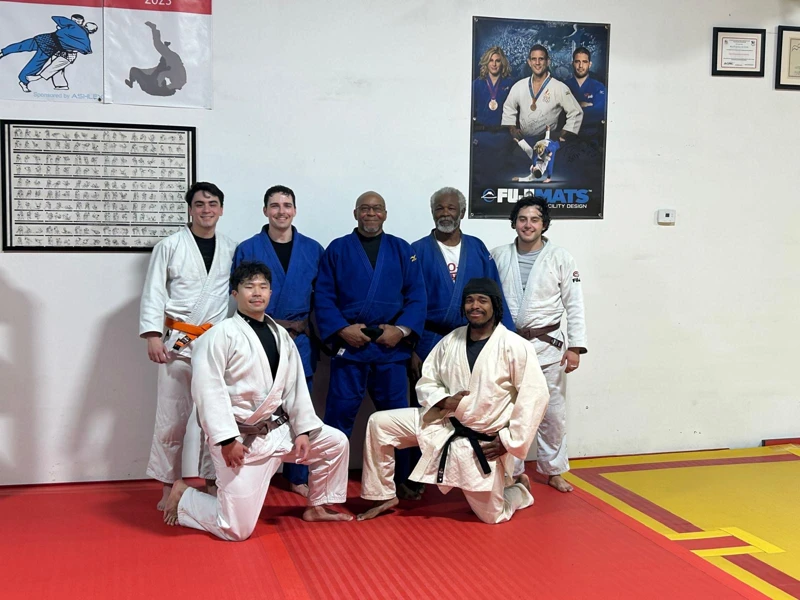
Around the time I joined, the Bindra and Herzon Labs submitted a paper on KL-50, a novel DNA-crosslinking agent. The agent was designed around the DNA repair protein MGMT, which removes alkylation at the O6-position of guanine and is silenced in >50% of glioblastoma, an incurable brain cancer. In the MGMT-deficient “tumor-like” cells, the fluoroethyl lesion KL-50 creates on O6-guanine cannot be removed, becoming an inter-strand crosslink (ICL) in a half-life of 18 hours; in the MGMT-proficient “patient-like” cells, MGMT has ample time to remove the O6-fluoroethyl, preventing ICL formation and greatly reducing toxicity. This work is published in Science. Excited by the concept of engineering alkylators to protect normal tissue and selectively kill tumor tissue, I began working with the Herzon Lab on a follow-up paper that details the chemical mechanism of KL-50 and its repair by MGMT.
First, we treated calf thymus DNA extract with KL-50 and used LCMS to detect the then-theoretical N1-guanine to N3-cytosine ICL. Our findings validated formation of the ICL. Next, to determine precise rates of ICL formation, we used radiolabeled oligos pre-synthesized with the O6-fluoroethyl lesion made by KL-50 or the O6-chloroethyl lesion made by clinical chloroethylating agents, like lomustine. We then added MGMT to observe how ICL formation changed over time. Virtually no ICLs formed in the O6-fluoroethyl condition in the presence of MGMT over the course of 70 hours, while the O6-chloroethyl condition still formed ICLs in the presence of MGMT, a likely explanation for chloroethylating agents’ inferiority to KL-50 in preclinical models.
Interestingly, we observed the O6-chloroethyl also formed DNA-protein crosslinks (DPCs) with MGMT while the O6-fluoroethyl showed little to no DPCs. I designed and conducted experiments to detect total DPC formation and specific MGMT-DNA DPCs in cellulo using the colorectal cancer cell line DLD-1. I demonstrated that lomustine, commonly used to treat glioblastoma, formed abundant DPCs with MGMT while KL-50 formed no detectable MGMT DPCs. These findings provide an additional explanation for KL-50’s superiority to lomustine and other chloroethylating agents, while also offering a previously undescribed mechanism for chloroethylating agents’ toxicity in the clinic. We published our findings in the Journal of the American Chemical Society.
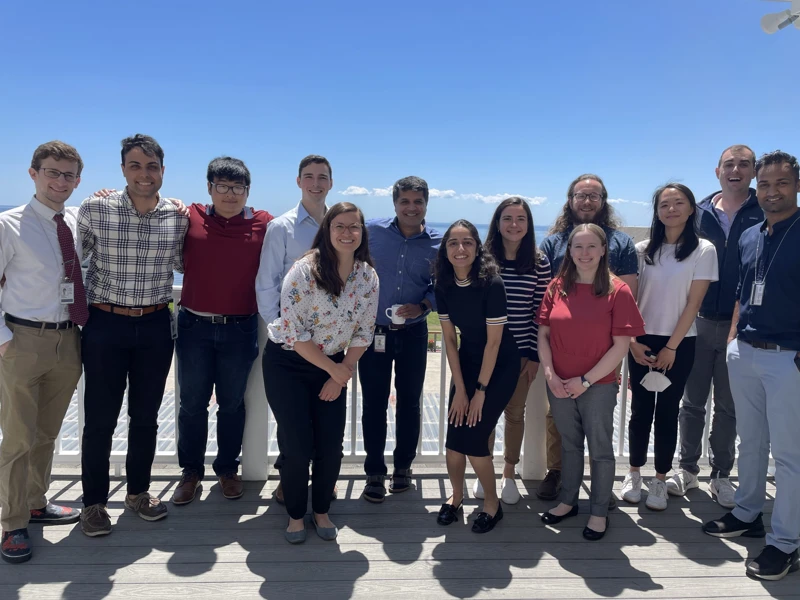
My current focus is my first-author role on our homologous recombination deficiency (HRD) project. About 14% of tumors show genetic alterations in HR genes, and 5% of tumors show a biallelic pathogenic alteration in HR genes. Epigenetic silencing can also cause HRD, leading to a total, pan-cancer HRD tumor population of 18% HR repairs double-stranded DNA breaks (DSBs) with high fidelity by using a sister chromatid as the template, usually during replication. Clinically, platinum-based DNA-crosslinking agents show strong anti-HRD-tumor effects but result in severe toxicity, necessitating a change in treatment regardless of tumor response. PARPi are effective against HRD-tumors with minimal toxicity, however, half of patients with HRD do not respond. We identified a crosslinking agent with an exceptional therapeutic index in cellulo, exceeding that of PARPi or platinating agents. I hope to share these results in a peer-reviewed publication soon!
In addition to the bench science described above, I work on several in silico projects. As of March 2025, I am preparing a first-author manuscript on a software application that automates nuclei counting and data analysis for dose-response assays. I am also the bioinformatics lead for a project developing therapeutics for blood cancers with DNA repair defects. I started programming in July of 2024 and have been hooked ever since. My goal over the next few years is to develop expertise in deep learning and its applications in cell biology.
